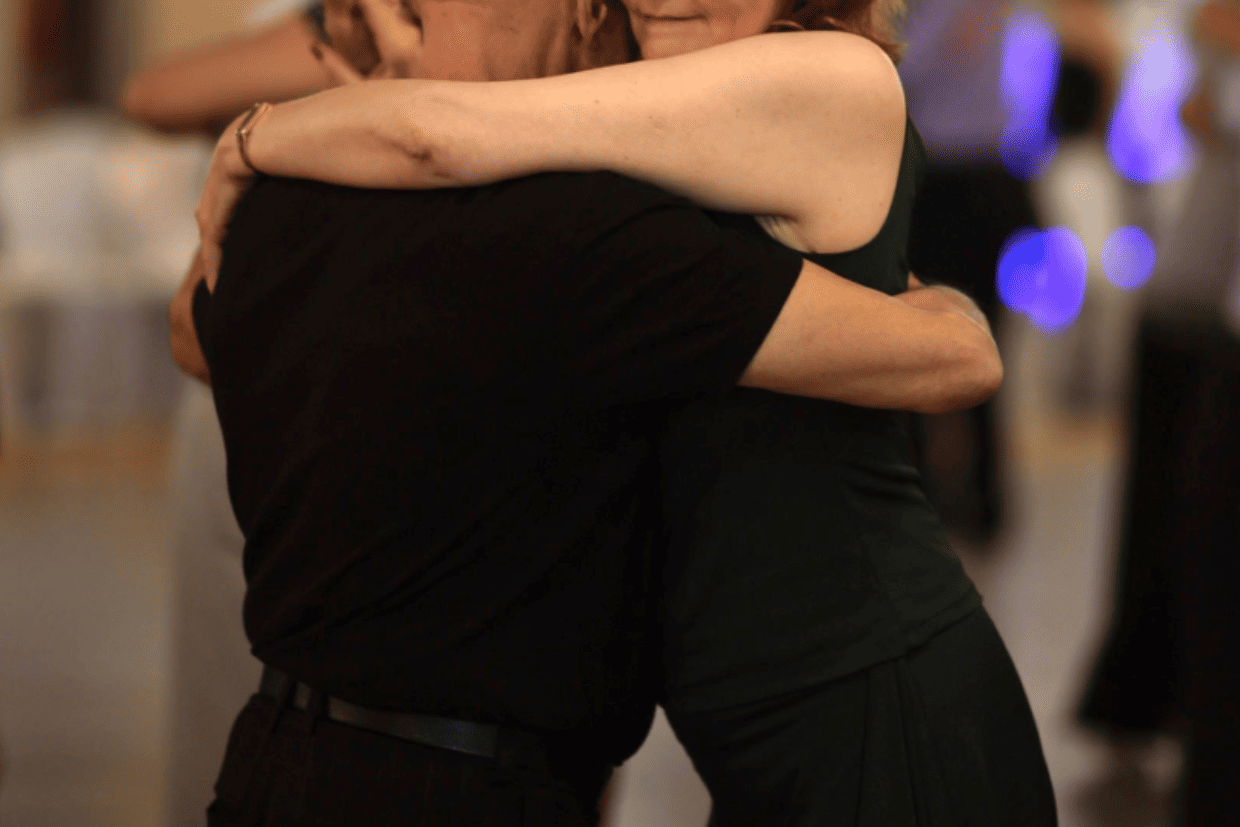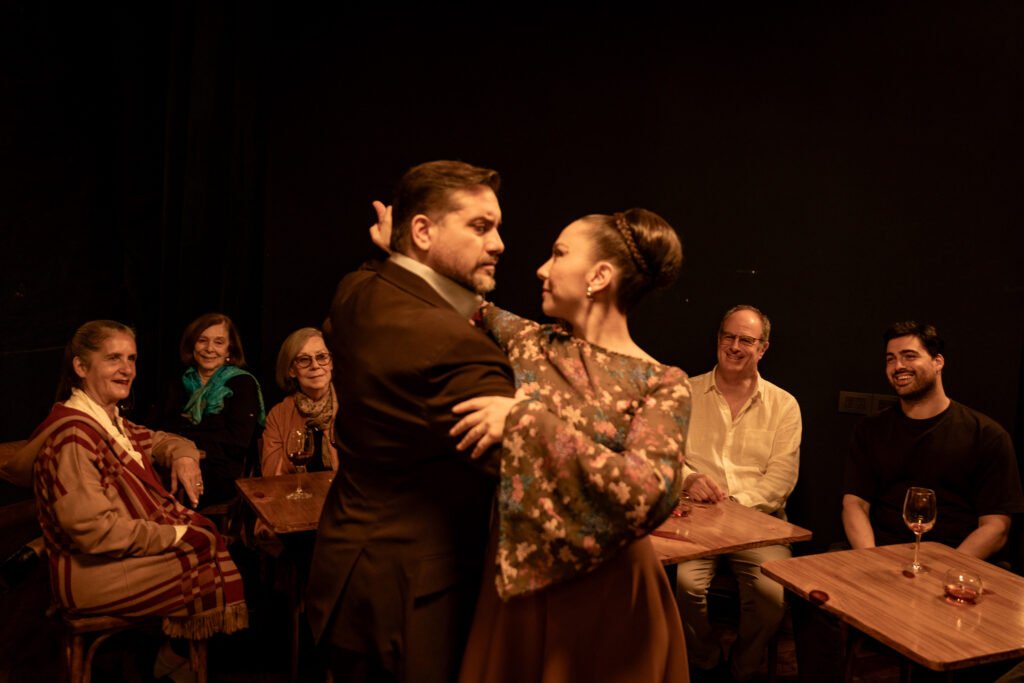Tango isn’t just a dance—it’s a feeling. Born in the working-class, immigrant neighborhoods of Buenos Aires, tango carries a raw, emotional intensity that hasn’t faded with time. Ironically, what was once seen as scandalous or even indecent is now one of the most elegant and revered dances in the world.
If you’ve ever wondered how to learn tango, this is a great place to begin. Learning tango isn’t just about memorizing steps—it’s about listening to the music, moving with intention, and discovering the subtle, wordless connection between partners.
Whether you’re dreaming of dancing at a local milonga or just curious to try something new while visiting Argentina, start by building a strong foundation. Because in tango, it’s not about perfection. It’s about presence, expression and letting yourself be moved.
Understanding the Basics of Tango
Before stepping onto the dance floor, it’s crucial to understand what makes tango unique. Unlike other ballroom dances, tango emphasizes connection, musicality, and improvisation. Here are the fundamental elements to considerwhen you learn tango:
- Posture and Frame: Keep your back straight, shoulders relaxed, and maintain a firm yet flexible embrace with your partner.
- Basic Steps: Learn the basic eight-count step pattern, which includes walking, side steps, and pauses.
- Connection with Your Partner: Tango relies on non-verbal communication through body movements and subtle signals.
- Musicality: Developing an ear for tango music helps in interpreting rhythms and expressing emotions through movement.

Essential Steps for Beginners
1. Learn the Tango Walk (Caminata)
The foundation of tango lies in the caminata, or tango walk. This fundamental movement sets the tone for your dance, emphasizing elegance, precision, and control. In order to improve your caminata, focus on walking smoothly with controlled steps, ensuring that each movement is deliberate and fluid. Step forward and backward with confidence, keeping your weight evenly balanced between both feet, and practice walking in sync with tango music to develop a natural flow.
2. Master the Basic Eight-Count (El Ocho 8)
The ocho, or eight-count basic pattern, is one of the most recognizable movements in tango. It consists of a series of fluid steps that form a figure-eight motion. To master this step, start by practicing slow, deliberate movements, ensuring that your foot placement is accurate and controlled. The ocho requires coordination, so work on aligning your upper body movements with your lower body to maintain balance and grace. Over time, you will gain confidence in executing ochos effortlessly, allowing for smooth transitions in your dance.
3. Improve Your Embrace (Abrazo)
The embrace in tango is more than just a physical connection; it is an essential element that defines the dance’s intimacy and communication. Tango embraces vary from open to close, depending on the style and comfort level of the dancers. A well-executed abrazo should be firm yet flexible, allowing both partners to move comfortably while maintaining a strong connection. Keep your arms relaxed, avoid unnecessary tension, and focus on maintaining a consistent frame. The embrace should feel natural and supportive, fostering trust between you and your partner.
4. Develop Your Leading or Following Skills
Tango is a dance of partnership, requiring clear communication between the leader and the follower. Leaders must guide movements confidently and precisely, using subtle body signals rather than forceful pushes. On the other hand, followers should remain receptive, interpreting and responding to their partner’s cues with grace and fluidity. To develop these skills, practice dancing with different partners, focus on maintaining awareness of your partner’s movements, and refine your ability to adapt to subtle changes in direction and rhythm.

Common Mistakes to Avoid
- Stiffness: Many beginners struggle with tension in their bodies. I know it is difficult as a beginner, but it is essential to relax and move naturally, allowing fluidity in movements. Try to breathe deeply and focus on being present at the moment to avoid robotic motions.
- Ignoring the Music: Tango is more than just steps; it is an interpretation of music. Beginners often focus too much on footwork and neglect the rhythm. Listen to tango music regularly, practice identifying the beats, and move in harmony with the melody to create a more expressive dance.
- Forgetting Posture: Proper posture is crucial for maintaining balance, elegance, and connection with your partner. Avoid slouching or leaning too far forward. Keep your spine aligned, shoulders relaxed, and embrace firm but not rigid. Practicing in front of a mirror or recording yourself can help improve posture over time.
Secreto Tango Society: An Unforgettable Experience
You’re interested in tango (otherwise you wouldn’t be here), what it is, how to dance it… Now it’s time for you to learn how to actually experience tango.
If you’re in Buenos Aires, step into the world of Secreto tango society, an intimate and exclusive performance that captures the raw passion and energy of Argentina’s most iconic dance. With just 20 seats available, this unique experience allows you to connect closely with the dancers and musicians, making every moment truly immersive.
Unlike large-scale productions, Secreto Tango Society remains faithful to the essence of traditional tango, focusing on its deep emotions rather than flashy effects. It’s the perfect choice for those looking to experience the heart of Argentine culture.
And don’t worry! Tango speaks to all—no Spanish is needed to feel its intensity. In just 60 minutes, you’ll witness every movement, rhythm, and emotion as the story of tango unfolds in front of you.

Why Choose This Experience?
🔴 Intimate & Exclusive: A small audience of 20 ensures a close-up, personal experience.
💃 Authentic & Emotional: Discover the deep passion behind tango.
🌍 For Everyone: No words needed, just the universal languages of music and dance.
Book your place and let the soul of Buenos Aires sweep you away.
You may wonder…
How long does it take to learn tango?
It depends on your dedication and practice. Most beginners can learn basic steps within a few months, but mastering tango is a lifelong journey.
Do I need a partner to learn tango?
No, many tango lessons allow individuals to join and rotate partners, helping you develop adaptability and confidence.
What kind of shoes should I wear for tango?
While you learn tango, try to wear comfortable shoes with a smooth sole that allows easy pivoting and movement on the dance floor.
Where can I experience tango in Buenos Aires?
If you’re looking for something authentic, intimate, and moving, Secreto Tango Society is a must. Forget big stages and fake smoke, this is the real deal.
Ready to Learn Tango in Buenos Aires?
Learning tango takes patience, practice, and passion. As every new challenge, it is not for the anxious, but for the patient and persistent.
Still, by focusing on posture, musicality, and connection, you can develop confidence on the dance floor. Keep practicing, attend classes, and immerse yourself in tango culture to truly appreciate the depth of this mesmerizing dance.
If you’re also interested in the history of tango, its icons, and its evolution, we’ll be waiting for you on our blog. 😉
Article available in other languages⬇️
How useful was this post?
Click on a star to rate it!
Average rating 5 / 5. Vote count: 2
No votes so far! Be the first to rate this post.






